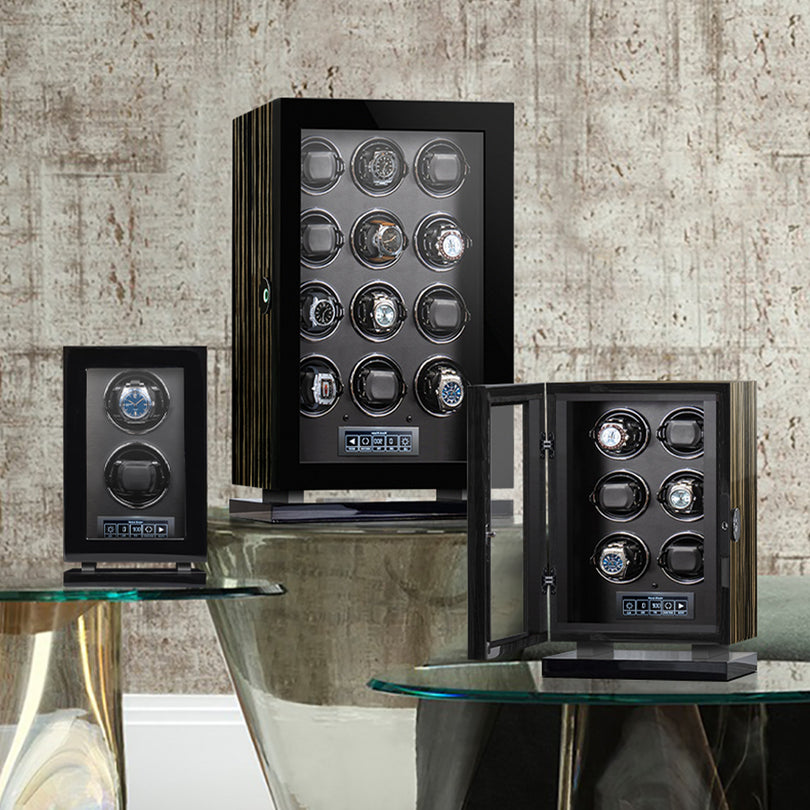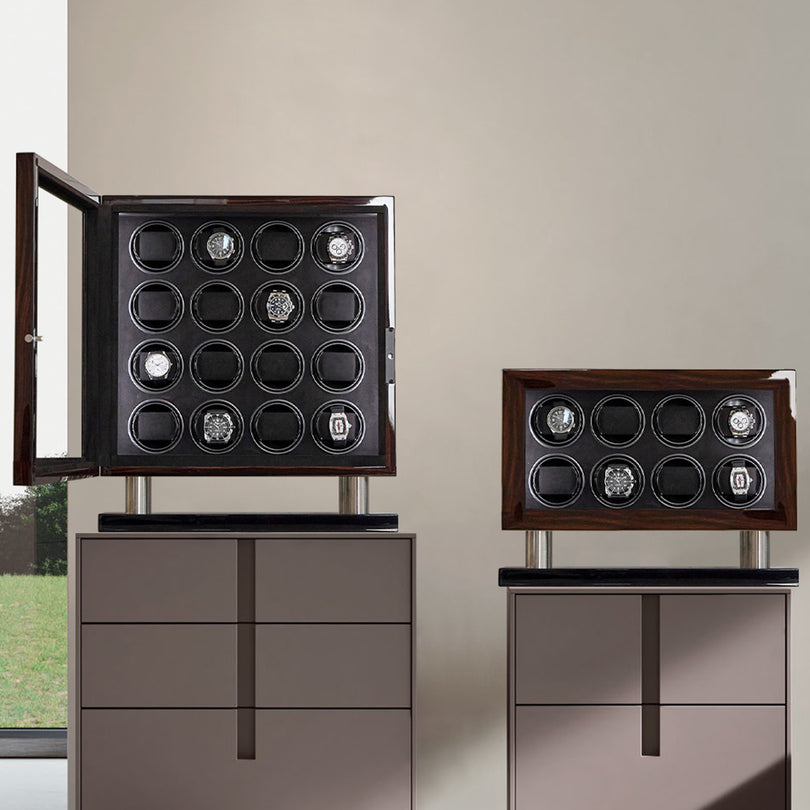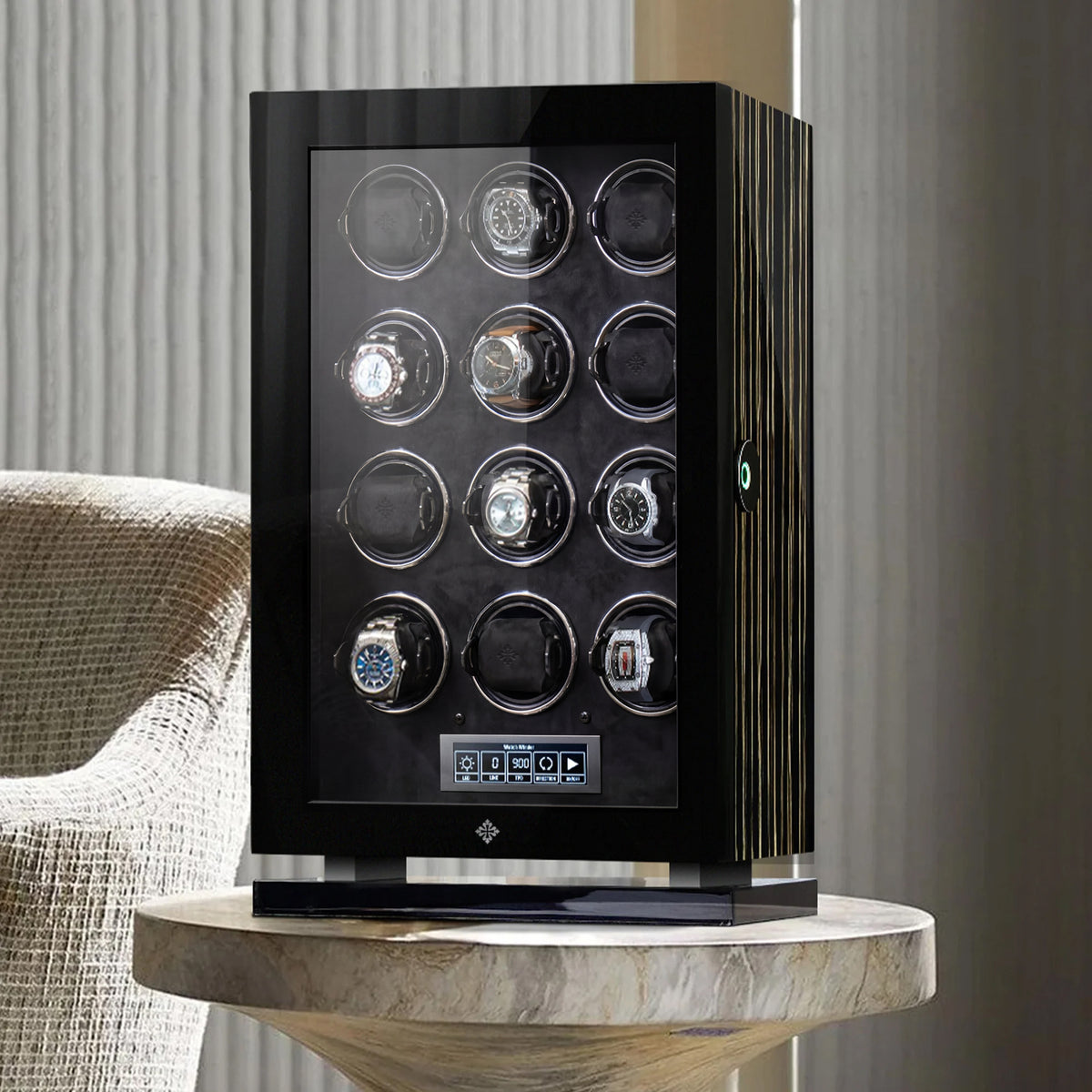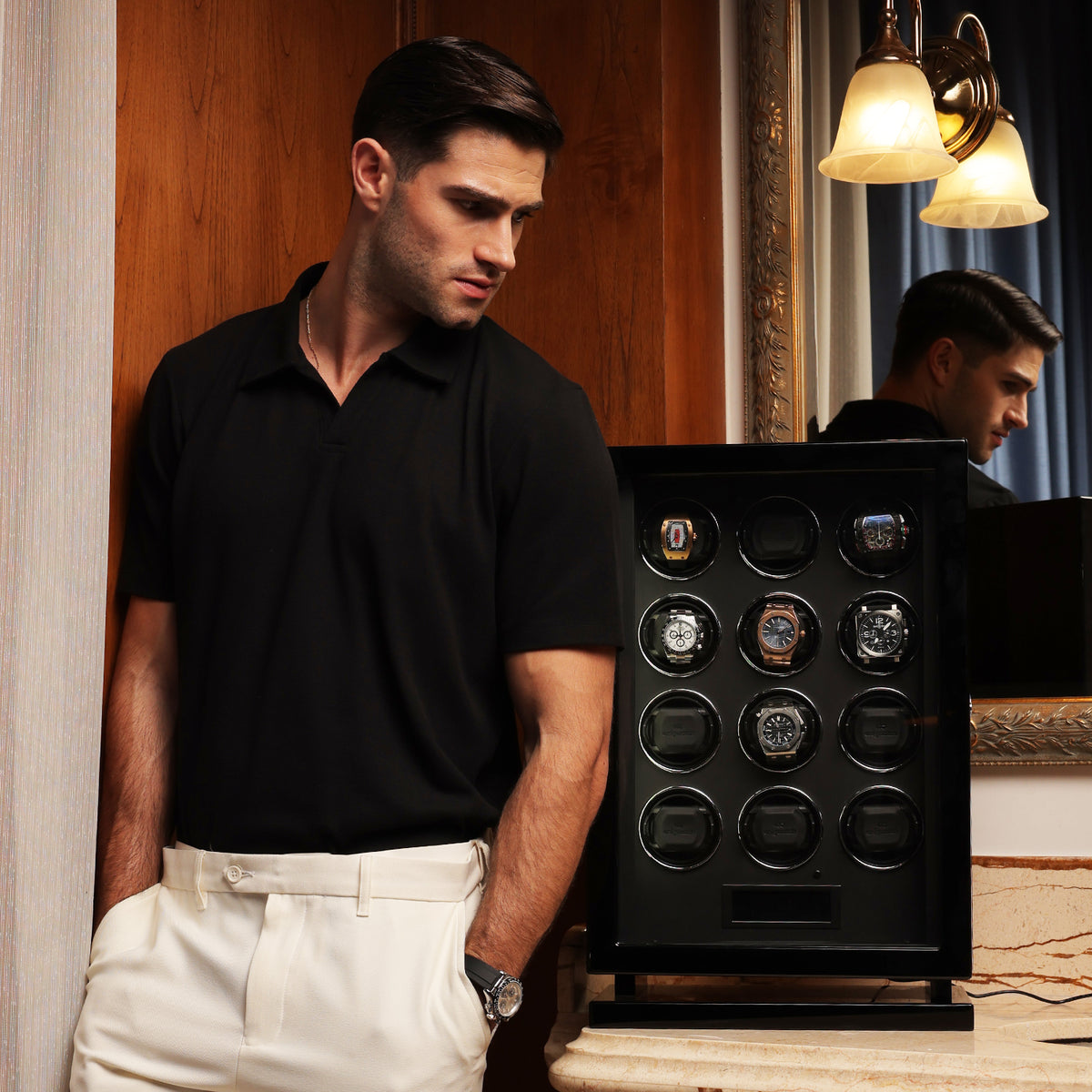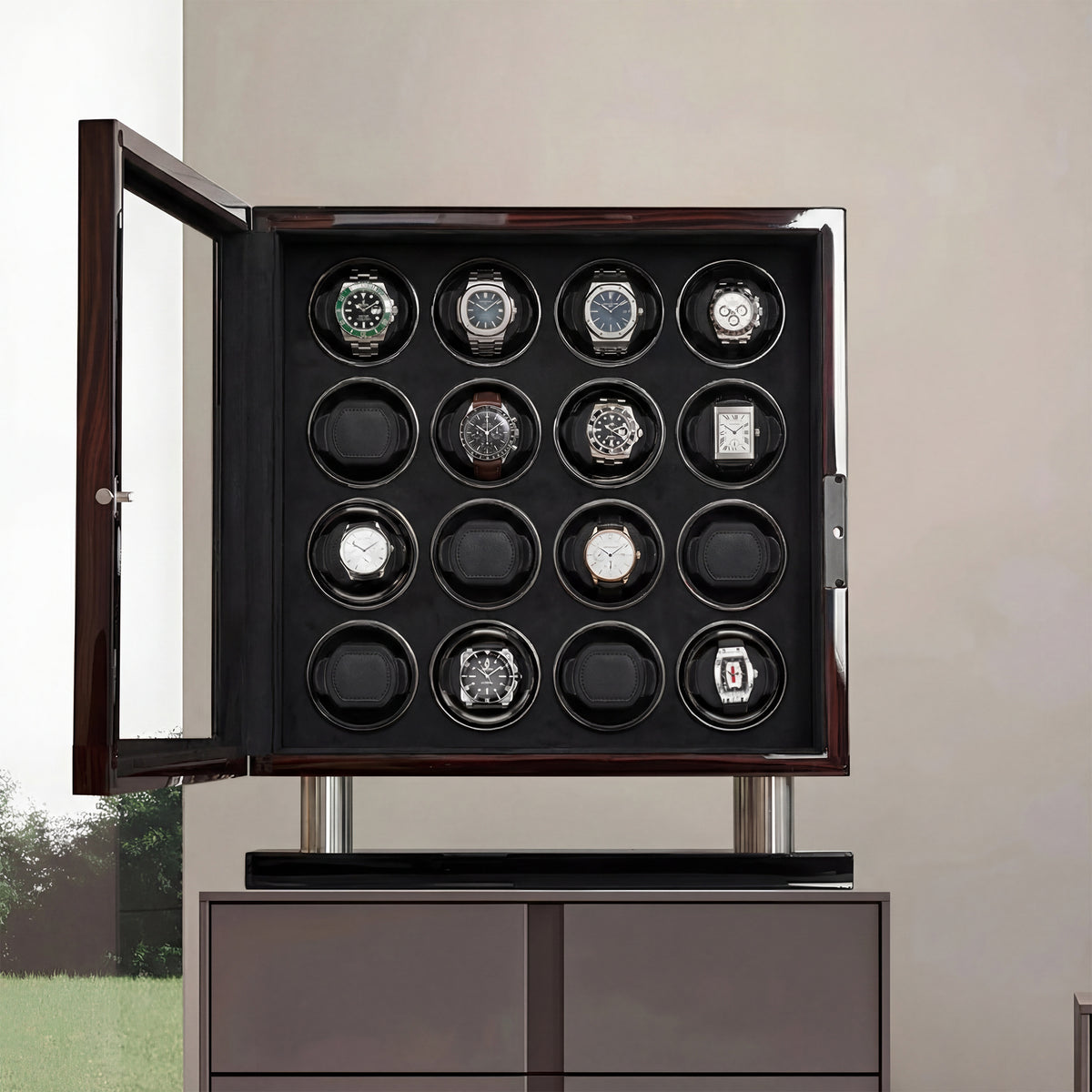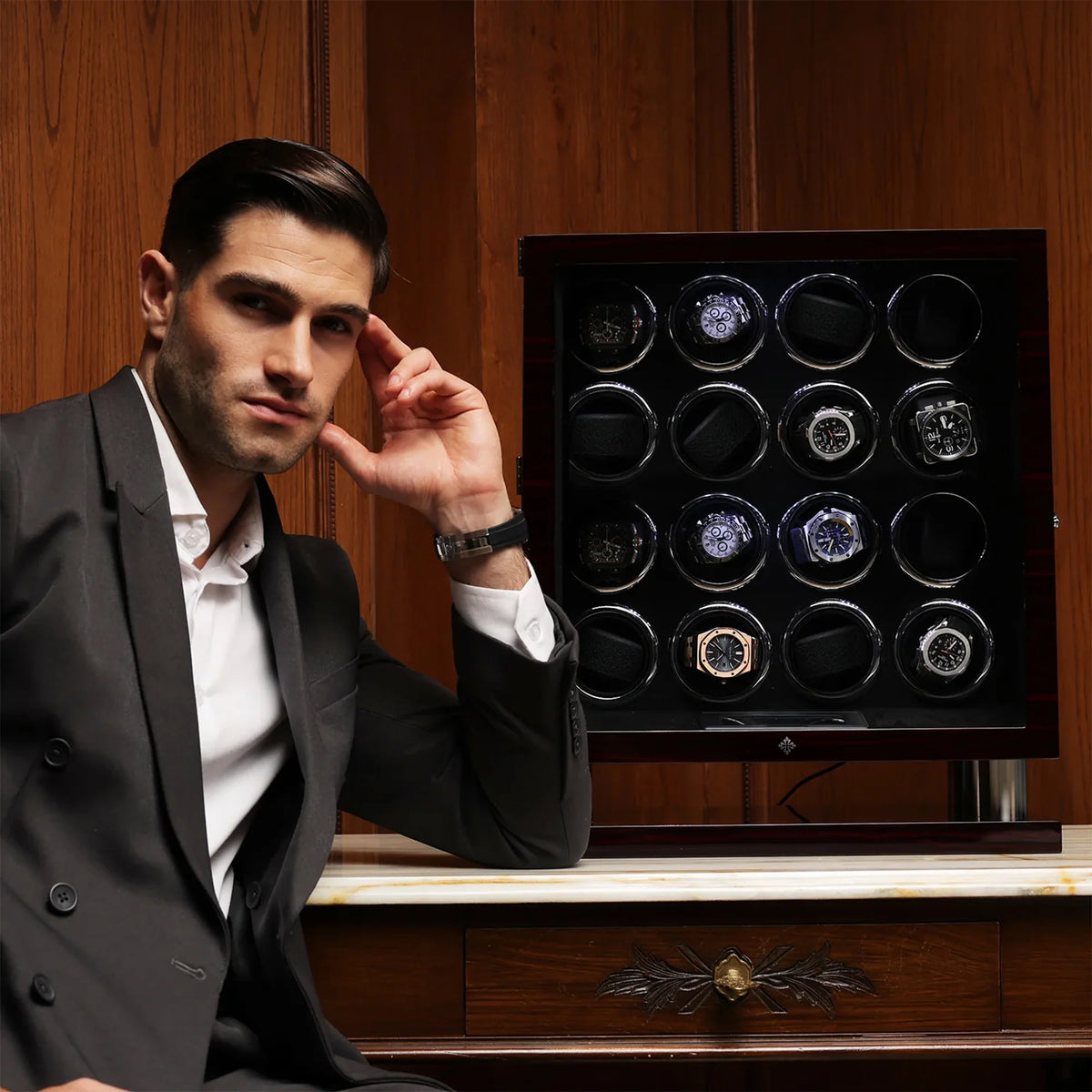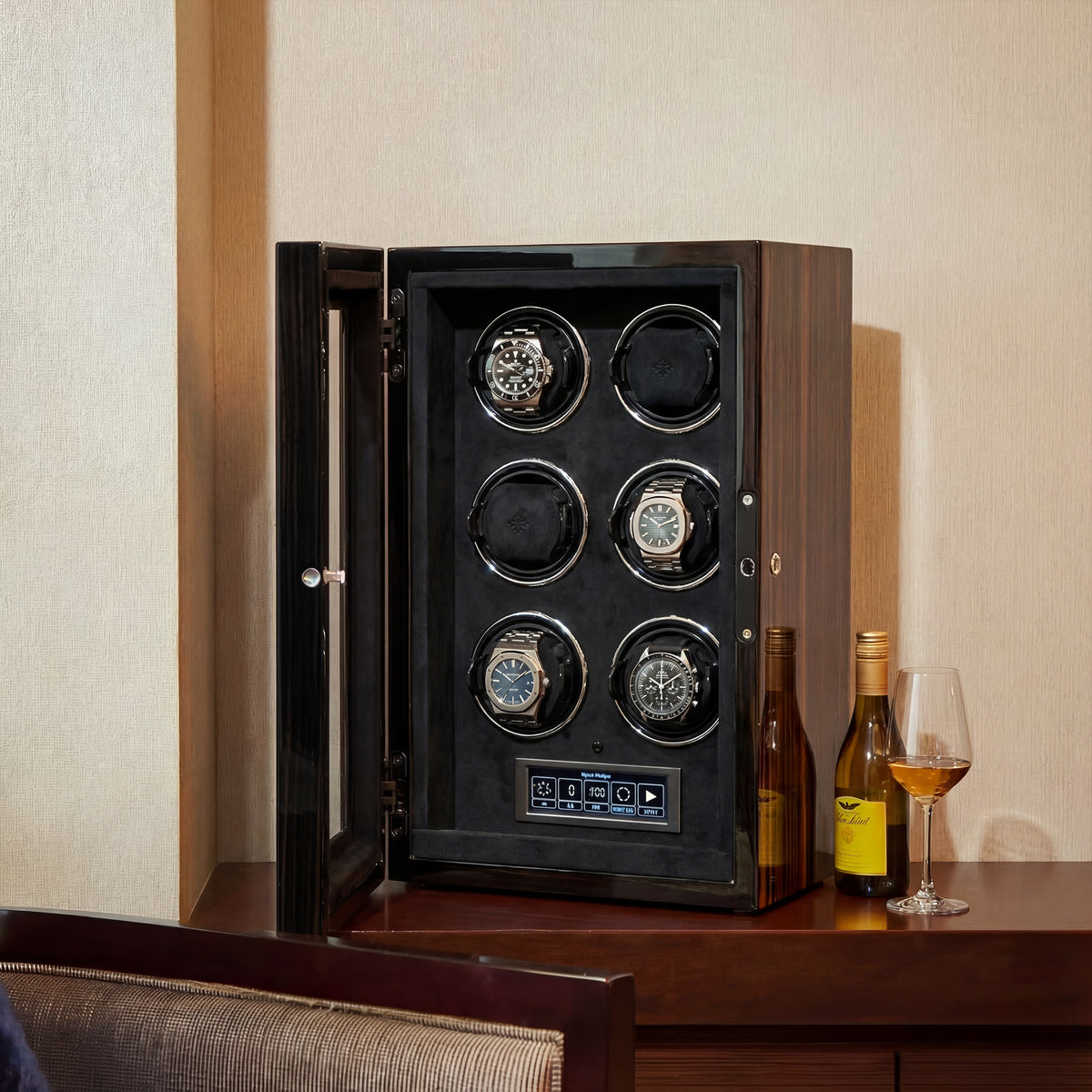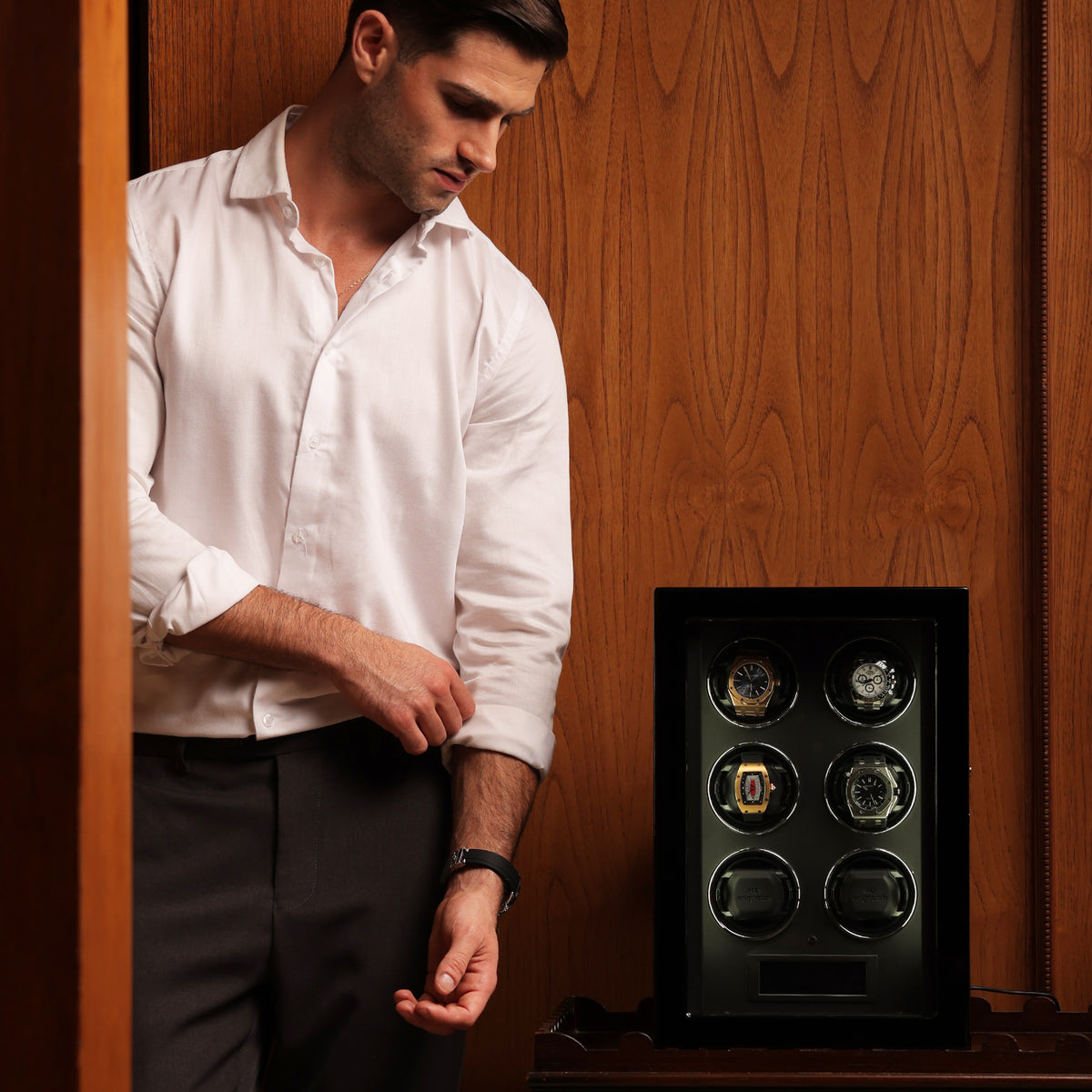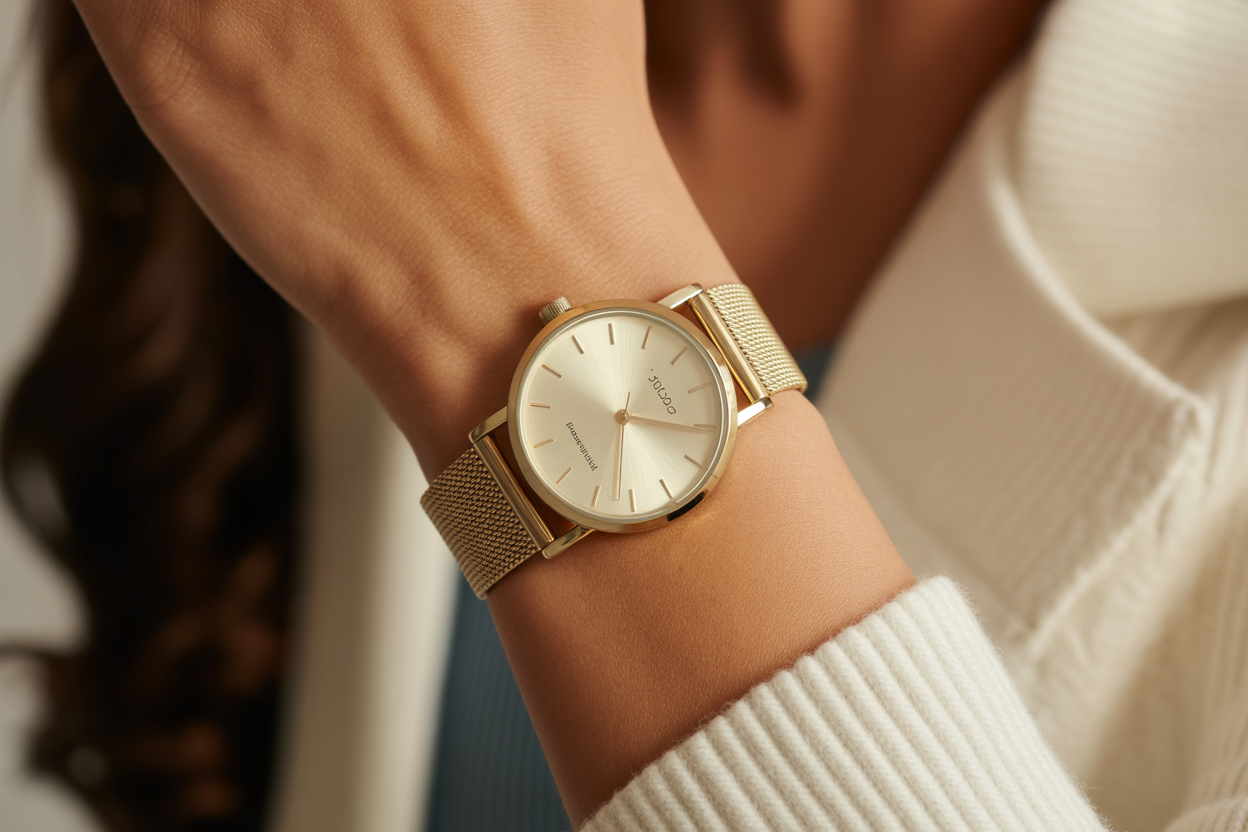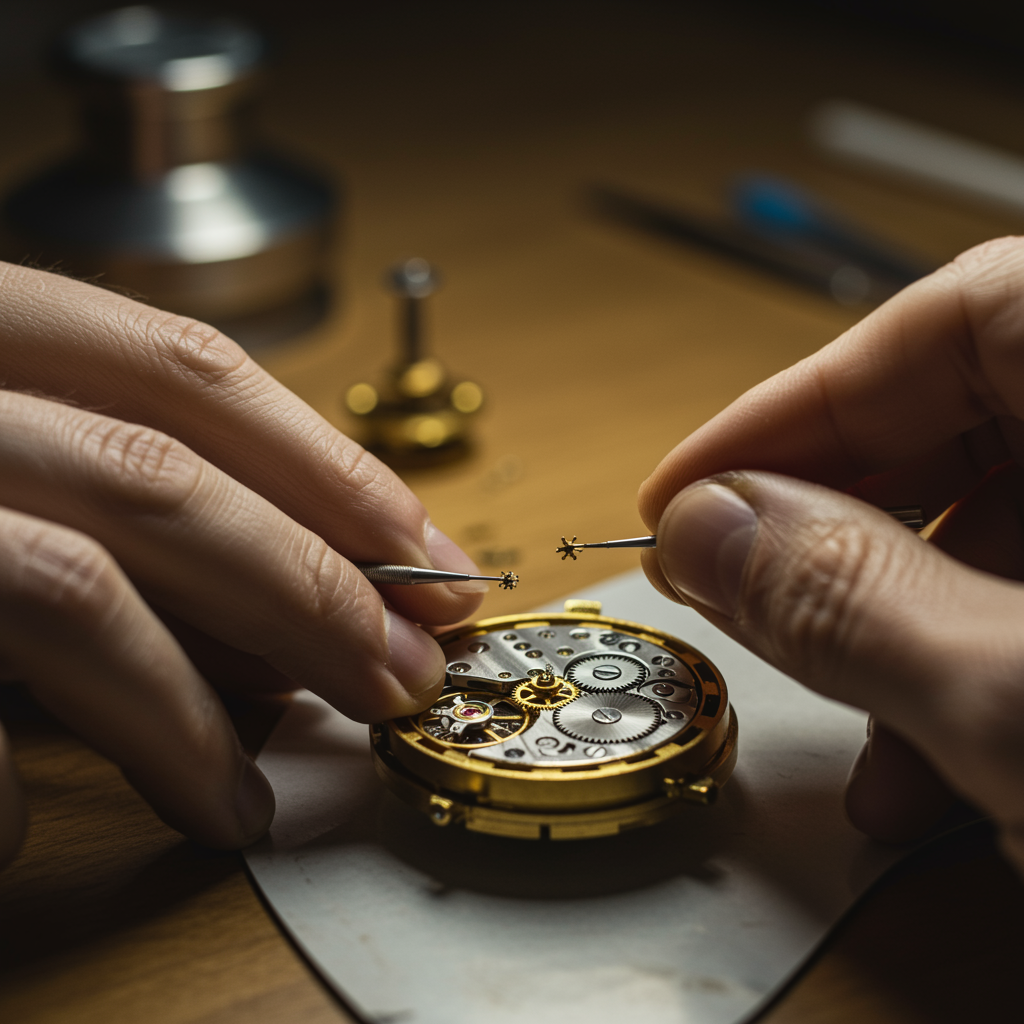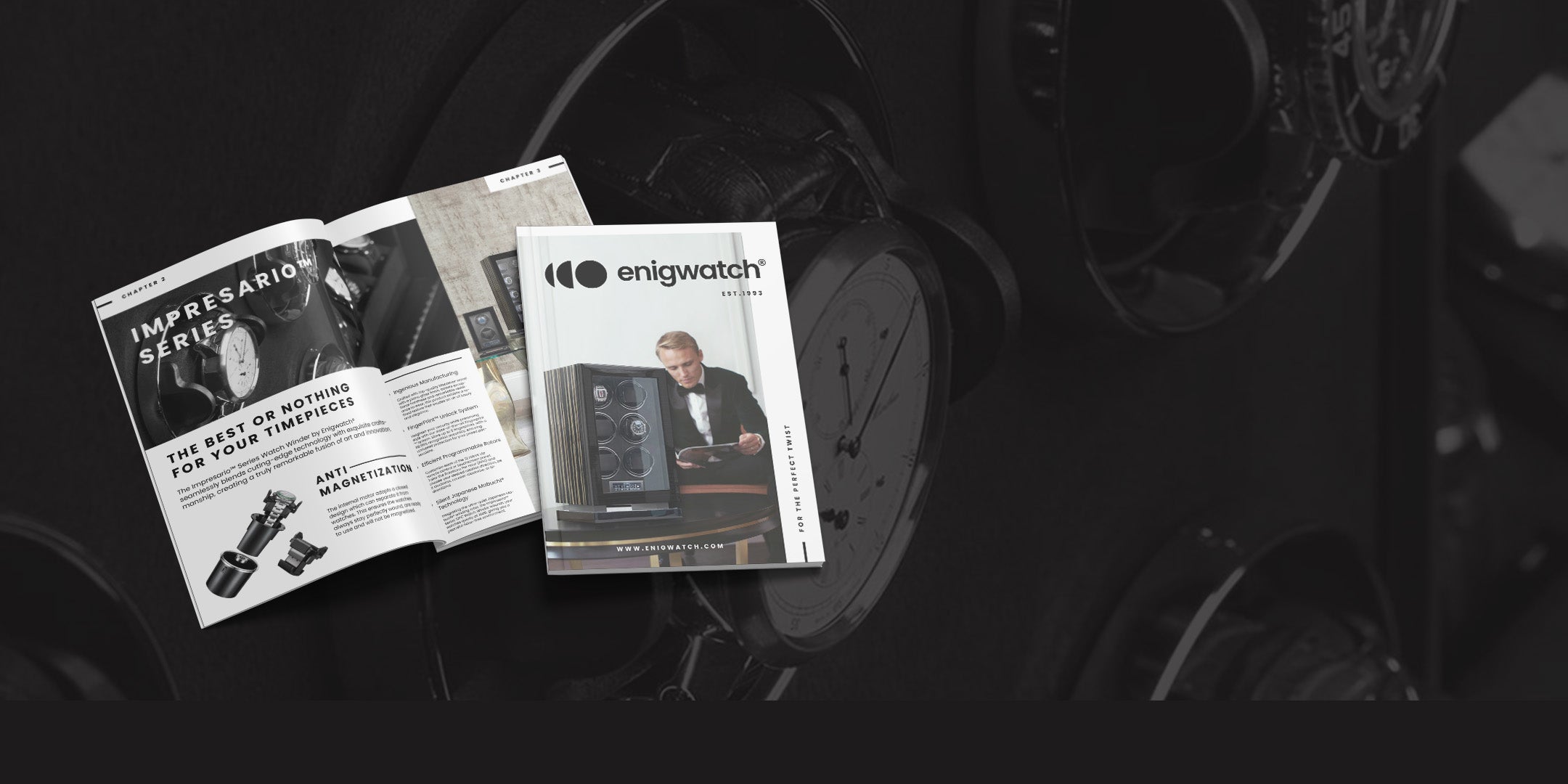The world of luxury watches is filled with amazing choices, each with its own story and beautiful design. Two brands that always catch our eye are Tudor and Breitling, since they both have a long history and offer incredible watches. However, they've each taken their own unique direction in the world of watchmaking. If you love watches but find yourself stuck between the classic style of a Tudor vs Breitling with the eye-catching designs, it can be a tough decision!
In this article, we break down seven key differences between these two amazing watch brands. Get ready to learn about their different styles, features, prices, and more. This will help you make the best choice for your next watch purchase in 2024.
History: Tudor vs Breitling
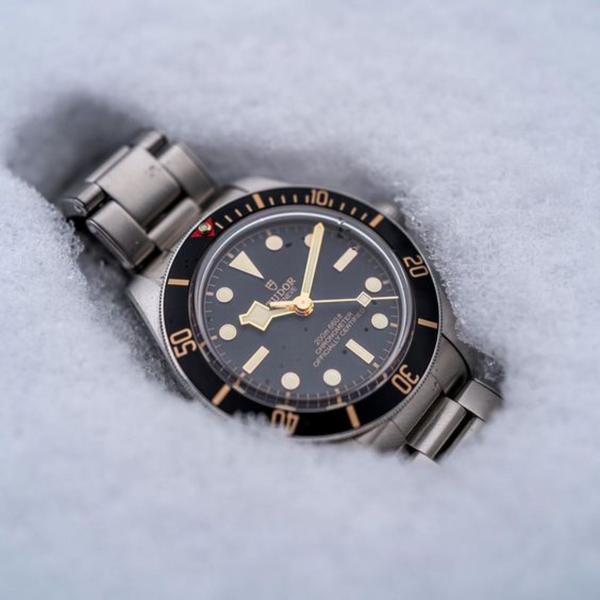
You might also like: Tissot vs Tudor: 2023 Full Brand Comparison
When exploring the histories of Tudor and Breitling, two well-known names in the luxury watch industry, it's important to understand their unique stories and impacts. Tudor was founded in 1926 by Hans Wilsdorf, the creator of Rolex, with the goal of offering Rolex's reliability and prestige at a more affordable price. Tudor is especially known for its durable dive watches that combine performance with style.
Breitling, started in 1884 by Léon Breitling, has a strong connection to aviation, making watches designed specifically for pilots. One of their major achievements was creating the first standalone button to control the stopwatch function. Both brands have developed their own distinctive identities that have earned them a respected place in the world of luxury watches.
Design: Tudor vs Breitling
In comparing the designs of Tudor and Breitling watches, each brand stands out with its unique style. Tudor watches are known for their elegant and classic look, featuring clean lines and a simple design. This makes them versatile, suitable for both everyday wear and formal events.
Breitling, on the other hand, is known for its bold and rugged designs that reflect its aviation roots. Breitling watches often have busy dials with several features and a sturdy build, appealing to those who like a more robust and functional watch. When choosing between Tudor and Breitling, it's important to consider which style best fits your personal taste and daily needs.
You might also like: Review Tudor Chrono Heritage 2023: Features, and Watch Winder Guide
Innovation: Tudor vs Breitling
These two watch brands are known for pushing the boundaries when it comes to innovation, and they both have a rich history of doing so.
Tudor, for instance, was the OG (that's Original Gangster for those who are out of the loop) when it comes to introducing the self-winding rotor in a wristwatch. That's right, Tudor was slaying the game way back when other watch brands were still trying to figure out how to attach a strap to a watch. Talk about being ahead of the curve!
And then we have Breitling, who was one of the first brands to introduce a chronograph function in a wristwatch. If you don't know what a chronograph is, don't worry, I won't judge you (well, maybe a little).
It's basically a stopwatch function that allows you to time events with precision. And Breitling was all over it like a cheap suit.
Performance: Tudor vs Breitling
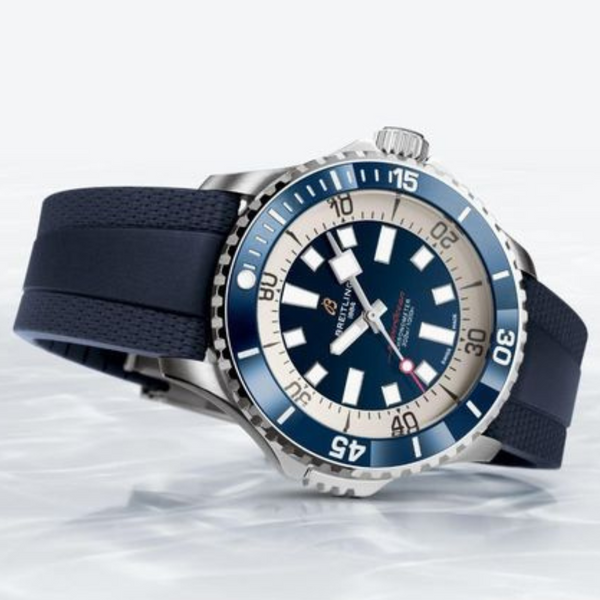
Tudor is like the reliable friend that you can always count on. Their watches are known for their reliability and durability, which means they won't bail on you when you need them the most.
You can wear them on a mountain climb, a deep-sea dive, or just your average day at the office (if that's your thing), and they'll keep ticking away like the Energizer Bunny on steroids.
And then there's Breitling, the precision ninja of the watch world. These bad boys are known for their accuracy, which means you can trust them to keep the time down to the nanosecond.
Whether you're a pilot navigating through a storm or a race car driver trying to shave milliseconds off your lap time, Breitling's got your back.
You might also like: Breitling Watch Winder Settings 2023, Always in Top Condition!
Materials: Tudor vs Breitling
Oh, boy, let's talk about materials, baby! Tudor and Breitling are like two kids in a candy store when it comes to selecting the highest quality materials for their watches.
Tudor's got their proprietary alloy, 904L steel, which is like the superhero of metals. This baby is known for its corrosion resistance, so you won't have to worry about your watch getting all rusty and gross. And let's be real, nobody wants a rusty watch - that's like wearing a mullet to a job interview. Not a good look.
And then we have Breitling, the mad scientists of the watch world. These guys are always experimenting with innovative materials, like Breitlight. This stuff is like a featherweight champion - lightweight and durable, so you won't even notice it's on your wrist until someone compliments you on how awesome it looks.
But wait, there's more! Both Tudor and Breitling use high-quality materials like stainless steel, gold, and titanium. They don't mess around when it comes to selecting the best of the best. These watches are like the Rolls Royce of timepieces - sleek, stylish, and built to last.
You might also like: A Full Comparison of Rolex vs Breitling: Which One is Better?
Prices: Tudor vs Breitling
When it comes to prices, both Tudor and Breitling are on the higher end of the spectrum. Tudor's watches typically range from $2,000 to $5,000, while Breitling's watches can go up to $50,000 or more. However, both brands offer watches at a variety of price points to accommodate different budgets.
Both brands provide excellent quality, but Tudor is typically more budget-friendly, while Breitling is suited for those ready to spend more for special features and a rich history.
Values: Tudor vs Breitling
Tudor and Breitling both place a high value on craftsmanship, quality, and innovation. They both have a commitment to producing watches that are not only beautiful but also functional and reliable. Both brands also have a strong sense of heritage and tradition, which is evident in their designs and marketing.
Tudor focuses on classic elegance and durability. Their watches are reliable and well-made, appealing to those who appreciate a timeless look and good craftsmanship at a reasonable price. Breitling, however, is known for its precision and innovative features, especially in watches made for flying. Their designs are bold and sophisticated, equipped with detailed chronographs to meet the needs of professional pilots.
The Perfect Watch Winders for Your Tudor and Breitling Timepieces
When it comes to luxury watches like Tudor and Breitling, ensuring their optimal performance and longevity is paramount. These timepieces, with their intricate mechanisms and precision engineering, deserve the best care. A watch winder not only keeps your watch ticking but also ensures that its movement remains accurate. Given the prestige and intricacy of Tudor and Breitling watches, it's essential to pair them with a winder that complements their elegance and functionality. Let's delve into two top-tier watch winders that are perfect for your Tudor and Breitling collections.
Virtuoso™ 6 Watch Winder
VIRTUOSO™ Series 6
Ebony Macassar, silent Mabuchi® tech, touch controls, key lock, supports 99% automatic watches. Perfect for cherished timepieces with smart remote control.
Discover NowBest Deals
The Virtuoso™ 6 Watch Winder is a harmonious blend of aesthetics and functionality, making it an ideal companion for your Tudor and Breitling watches. Its state-of-the-art mechanism ensures that your timepieces receive the precise winding they need, preserving their accuracy and extending their lifespan.
The luxurious design of the Virtuoso™ 6, with its meticulous craftsmanship, mirrors the elegance of Tudor and Breitling watches. Whether you own a Tudor Black Bay or a Breitling Navitimer, this winder will elevate your watch's care to the next level. Discover the Virtuoso™ 6 and give your timepieces the luxury treatment they deserve.
Impresario™ Series 12 Watch Winder
IMPRESARIO™ Series 12
Macassar wood, Fingerprint™ security, programmable rotors, silent Mabuchi® tech, touchscreen settings. Luxurious display for discerning collectors.
Discover NowBest Deals
For watch enthusiasts with an extensive collection, the Impresario™ Series 12 Watch Winder is a game-changer. Designed to cater to the needs of high-end watches like Tudor and Breitling, this winder offers precision winding with customizable settings. Its spacious design can accommodate multiple watches, making it perfect for collectors.
The sleek aesthetics and top-notch build quality of the Impresario™ Series 12 resonate with the luxury and precision of Tudor and Breitling timepieces. Don't compromise on your watch's care; experience the excellence of the Impresario™ Series 12 and ensure your watches always stay in prime condition.
Choosing Between Breitling and Omega: A Detailed Guide for Watch Enthusiasts
When considering luxury watches, the debate often extends beyond just Tudor and Breitling, involving other prestigious brands like Omega. Making an informed choice requires understanding several key factors that differentiate these brands. This guide explores these considerations, helping enthusiasts decide which brand aligns best with their preferences and lifestyle.
Understanding the Legacy and Innovation of Breitling and Omega
Breitling, known for its precision and innovation, particularly in chronographs, has established itself as a leader in the field of professional aviation watches.
Omega, with its rich history of Olympic timekeeping and space exploration, offers unmatched precision and reliability. Both brands boast significant contributions to watchmaking history, but their paths and areas of specialization diverge, offering unique value propositions to enthusiasts.
Design Philosophy and Aesthetic Appeal
While Breitling's designs often feature bold, intricate dials and robust cases reflecting its aviation heritage, Omega's range includes both sporty and classic designs, catering to a wider audience. The choice between Breitling's technical prowess and Omega's versatile elegance depends on personal style and the occasions for which the watch is intended.
Technological Innovations and Features
Breitling's integration of the emergency locator beacon technology in its Emergency watch and Omega's development of the Co-Axial escapement showcase each brand's commitment to innovation.
Prospective buyers should consider these technological advancements and how they align with their needs, whether it's for professional use or everyday wear.
Price Points and Investment Value
Both Breitling and Omega offer watches across a wide price range, but their investment value can vary. Omega's historical pieces, especially those associated with space missions or the Olympics, tend to appreciate over time.
In contrast, Breitling's limited editions and models significant to aviation history also present potential for appreciation. Understanding the market and choosing a watch that holds personal and financial value is crucial.
Conclusion
So, which one is better, Tudor or Breitling? It really comes down to personal preference. If you're looking for a watch with an elegant and understated design, Tudor might be the brand for you. If you want something bold and daring, Breitling might be more up your alley.
Both brands offer exceptional quality and craftsmanship, so you can't go wrong either way. Ultimately, it's all about finding the watch that speaks to you and suits your individual style and needs.

